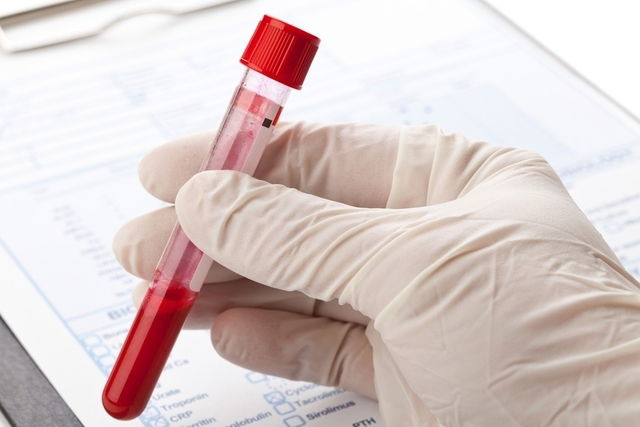C-reactive protein (CRP) is a protein produced by the liver. It is made in high amounts when there is some type of inflammatory or infectious process occurring in the body, and is often one of the first signs of a blood test abnormality.
This protein is usually used to assess the possibility of a non-visible infection or inflammatory process, such as appendicitis, atherosclerosis, or viral and bacterial infections. However, C-reactive protein testing can also assess the risk of a person developing cardiovascular diseases, as high levels are generally associated with a high risk for developing disease.
The CRP test does not identify where the inflammation or infection is occurring specifically, but an elevated CRP level shows that the body is fighting a foreign invader. This may also be noted in the white blood cell count. Since there may be different variables at play, CRP test results should always be evaluated by the doctor who ordered the test.

Normal CRP levels
Normal CRP levels, for both men and women can vary up to 3.0 mg/L or 0.3 mg/dL. In relation to cardiovascular risk, the intervals that indicate the probability of developing a heart disease are:
- High risk: above 3.0 mg/L;
- Medium risk: between 1.0 and 3.0 mg/L;
- Low risk: less than 1.0 mg/L.
C-reactive protein levels should be between 1 and 3 mg/L. Low levels of CRP can also be seen in some cases, such as people who have undergone great weight loss, people who do a lot of physical activity, people who consume a lot of alcohol and those who use certain types of medication. It is therefore important for a doctor to identify the underlying cause.
CRP test results should always be interpreted by a doctor, as it's important for the results and initial assessment to be analyzed together to achieve an accurate diagnosis.
What is high-sensitivity CRP (hs-CRP) test
The high-sensitivity CRP (hs-CRP) test is prescribed when the doctor wants to assess the person's risk of developing cardiovascular problems, such as heart attack or stroke. In this case, the test is requested when the person is healthy, and doesn't have any symptoms or apparent infection. This exam is more specific, and it can detect very small amounts of CRP in the blood.
If someone is apparently healthy and presents with high CRP levels, this means that this person has a higher risk of developing peripheral artery disease, or having a heart attack or a stroke. In this cases, it's usually recommended to start a healthy diet and practice regular physical activity, in order to improve cardiac health.
What causes high CRP levels
High levels of C-reactive protein normally occur when there is some type of inflammatory or infectious process occurring in the body.
In some cases, the CRP amounts can indicate the gravity of the inflammation or infection:
- Between 3.0 to 10.0 mg/L: generally indicate mild inflammation or infection like gingivitis, flu or cold;
- Between 10,0 to 40,0 mg/L: can be a sign of a moderate infection, such as chickenpox or respiratory infection;
- More than 40 mg/L: generally indicate a more serious bacterial infection;
- More than 200 mg/L: may indicate septicemia, a very serious situation that can be life threatening.
An increase in CRP levels can also signal chronic disease and so the doctor may prescribe other exams to evaluate what could be causing the CRP levels to increase.
What to do when the CRP is high
After confirming high levels of CRP, the doctor will evaluate the results of other tests and assess the patient’s symptoms. From the moment the cause is identified, treatment can be started in a more focused and specific way.
When the patient shows signs of malaise without any other symptoms or specific risk factors, the doctor may request other exams, such as blood tumor marker tests or a CT scan, to check if increased levels of CRP are related to cancer.
When C-reactive protein levels are above 200 mg/L and an infection is confirmed, normally the person will be hospitalized to receive intravenous antibiotics. The CRP levels start to increase 6 hours after any infection starts and will usually start to lower after antibiotics. If CRP levels have not decreased after two days, it's important that the doctor establish another treatment strategy.
